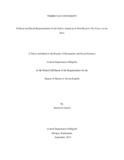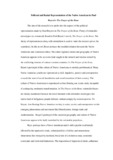Please use this identifier to cite or link to this item:
https://elibrary.tucl.edu.np/handle/123456789/2224| Title: | Socio-Economic Impact of Large Cardamom Farming in Taplejung: A Study of Sirijangha Rural Municipality, Taplejung District |
| Authors: | Baniya, Raj Kumar |
| Keywords: | Socio economic;Farming;Cardamoms |
| Issue Date: | 2017 |
| Publisher: | Central Department of Rural Development |
| Abstract: | Large cardamom is an important cash crop and livelihood option for people in eastern region of Nepal, especially in Taplejung. This high-value, minimal labor-intensive and non-perishable crop is cultivated as an understory perennial crop. This study entailed 'Socio-Economic Impact of Large Cardamom Farming in Taplejung: A Study of Sirijangha Rural Municipality, Taplejung District' is based on primary data collection. The main objective of the study is to analyze the socio-economic impacts of the large cardamom farming in rural community. The specific objectives include examining the status of cardamom farming, major utilization pattern of income from large cardamom, role of large cardamom farming in changing socio-economic conditions of people and major challenges faced by cardamom farmers in using their income from cardamom farming for productive use. This study has applied both descriptive and explanatory research design. The sources of data were primary & secondary and nature of data was both qualitative & quantitative. A total of 86 households has been selected purposively and interviewed to investigate the status, utilization pattern, roles and challenges associated with large cardamom farming. This was supplemented by the field observation of cardamom plantations and interviews with four key informants, one FGD and one challenges analysis including farmer's group members, demo farmers, women and other stakeholders. The findings revealed that, despite its economic importance and increased farming in recent years, the price has been declined regularly. Yet, cardamom remains a major cash crop and the major source of income for livelihoods followed by remittance and employment. The sex ratio of household's population is 102.01 and economically active population is about ¾ while, about ¼ populations is economically inactive. The average cardamom cultivated area is 15.10 ropani per household. The average income from cardamom farming is Rs 1, 82,468 per household per year, which summed to 52.42% of total household's income. Whereas remittances contribution is only15.02%, The income from cardamom is expended in different sectors; most of the incomes were used in productive sectors like saving, land purchases, children education, and assets purchase. Some incomes from cardamom were used in unproductive sectors like jewelers purchase, non-basic food and other demonstrative use. After cardamom farming, different socio-economic changes have been found in the community, like 42.09% of income source from agriculture has been increased to 63.08%. Some changes in housing conditions, health facility use, education and sanitation were found. Other important positive changes were increased assets composition like fixed assets, liquid assets & modern assets. But the negative change in food sufficiency has been observed due to increasing coverage of cardamom farming. There are many challenges faced by the cardamom farmers for productive use of their income from large cardamom farming. The major challenges are fluctuation of price of cardamom, low level of awareness, demonstration effects, insufficient financial institution and absence of investment friendly environment. Despite some measurable challenges, cardamom farming is one of the least labor intensive, high-valued, non-perishable and leading crops. The geographical location and climatic conditions are suitable for cardamom farming. But production, price and market value of large cardamom have highly fluctuated. It justifies the need for diversifying livelihood options by searching alternatives of cardamom forming through change in cropping pattern, multi-cropping, inter-cropping and crop diversification of livelihood options. |
| URI: | http://elibrary.tucl.edu.np/handle/123456789/2224 |
| Appears in Collections: | Rural Development |
Files in This Item:
| File | Description | Size | Format | |
|---|---|---|---|---|
| Cover Page-2.pdf | 400.39 kB | Adobe PDF |  View/Open | |
| Chapter Page-2.pdf | 470.15 kB | Adobe PDF |  View/Open |
Items in DSpace are protected by copyright, with all rights reserved, unless otherwise indicated.
